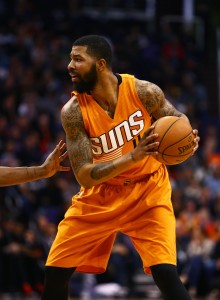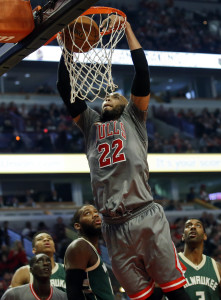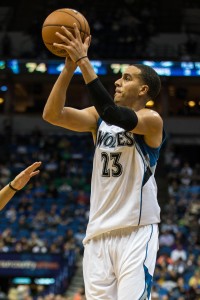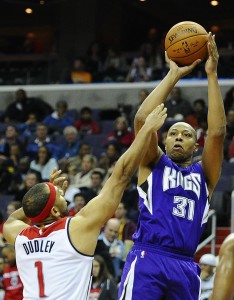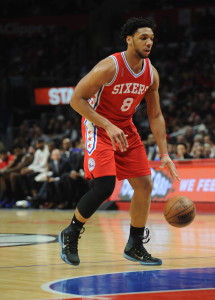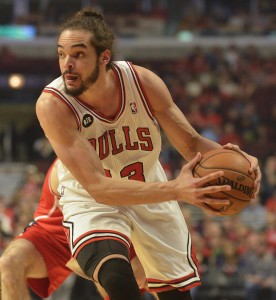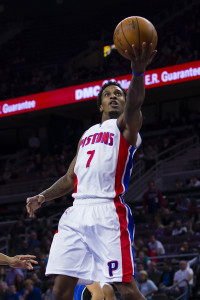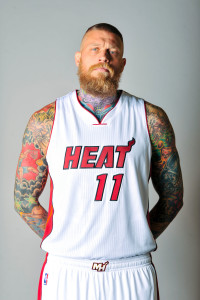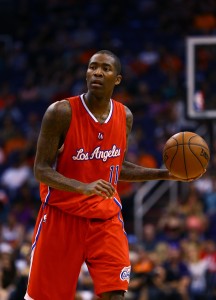When I first wrote a trade candidate piece on Markieff Morris in August, it didn’t seem as though the Suns could get fair value for a player who had made no secret of his desire to leave town, and after months of twists and turns in the saga, that still appears to be the case. It’s nonetheless worth checking in on the idea of a Morris trade once again, since much has changed for both player and team.
Morris came to training camp and essentially retracted his trade demand, though he’s played coy when asked specifically about whether he wants to be traded. He otherwise made a litany of team-friendly statements, but his twin brother, Marcus, caused a stir when he said Markieff “doesn’t look happy” playing with the Suns. Markieff dismissed his brother’s remark, but regardless, the problem the Suns had earlier this season appeared to be how he was playing, not where he was playing. Coach Jeff Hornacek took the struggling power forward out of the starting lineup and at times the rotation entirely, a situation that came to a head when Morris threw a towel that struck Hornacek after the two engaged in an argument on the bench during a late December game, leading the Suns to suspend Morris without pay for two games. Morris apologized, and after a 16-point, nine-rebound effort off the bench against the Pacers a week ago, Hornacek surprisingly gave him his starting job back.
A decent chance exists that Morris is starting again chiefly because the Suns want to showcase him for trades, but it’s not as if Phoenix is without reason to legitimately experiment with its lineups, having lost 13 of its last 14 games. The Suns have nonetheless made Morris “very available” to other teams, as Marc Stein of ESPN.com wrote last month, and reports over the past few months have indicated that Phoenix has spoken about potential Morris trades with the Pelicans and Rockets.
New Orleans has seemingly been reluctant to trade Ryan Anderson for Morris, but conversations with the Rockets reportedly reached an advanced stage, with the sides discussing the idea of swapping Morris for Terrence Jones and Corey Brewer. Friday was the first day such a trade could happen, since Brewer wasn’t eligible to be traded before January 15th, but it hasn’t happened yet. The Suns have reportedly eyed the Cavs as a potential faciliator in a three-team deal that would send Morris elsewhere, and the Pistons, who already traded for his brother this summer, also apparently hold interest.
The Suns have reportedly shifted focus away from veterans like Anderson and toward young players and draft picks as they consider what they could get in a Morris trade. That makes sense, since the team has plummeted to 13-29, but that only puts them five and a half games out of the playoffs in a Western Conference that’s much weaker than usual. GM Ryan McDonough said recently to Gary Washburn of The Boston Globe that the team isn’t quite ready to declare the postseason a lost cause yet.
Regardless, it doesn’t appear as though the Suns can be too picky about what they get for Morris at this point. McDonough said on Arizona Sports 98.7 FM last week that he felt no immediate pressure to trade him. Perhaps that’s because of an unyielding market. Zach Lowe of ESPN.com reported last month that teams were asking the Suns to attach another player to Morris in trade proposals, indicating an unwillingness to take Morris without receiving some additional compensation. I speculated in August that packaging either Archie Goodwin or T.J. Warren with Morris could net the Suns a starting-caliber power forward in return, but Warren and Goodwin are just the sort of developing players Phoenix reportedly wants to have. Goodwin is still struggling to find playing time in his third NBA season, however. It wouldn’t represent that much of a sacrifice for the Suns to move on from him if another team really likes the former 29th overall pick, but it’s unclear if McDonough and company are ready to make such a move.
The Suns no doubt understand better than anyone else how much the continued presence of Morris influences Goodwin, Warren and the rest of the locker room. Morris’ legal troubles and criticism of Suns fans in the past raise red flags, but it doesn’t necessarily mean he’s a poor teammate. It’s possible the Suns prefer to keep Morris around as a lightning rod for controversy to deflect blame from Hornacek and the rest of the roster as it underachieves.
Still, the back-and-forth surrounding Morris seems to signal that Phoenix will ultimately trade him. The Suns could do worse than Jones and Brewer from the Rockets, if that proposal remains in play. They could see what they could get from the Pistons, but Detroit is in strong contention for its first playoff berth since 2009 and doesn’t seem particularly eager for a major move. The Pelicans have traded their last three first-round picks and don’t have many intriguing young players other than Anthony Davis, who’s surely off the table.
It’s easy to say the Suns should have moved on from Morris a while ago, but for now, it doesn’t appear they have too many strong options. The chances of finding a taker improve as the deadline nears, and the Suns should have a better idea by then of whether they’ll have a reasonable chance to make a run at a playoff berth. All bets are off if Phoenix doesn’t win a game or two in the next couple of weeks or if another Morris controversy emerges, but barring an unforeseen change, expect the Suns to hang on to Morris until the deadline, if not longer.
What do you think the Suns should do with Morris? Leave a comment to share your thoughts.
